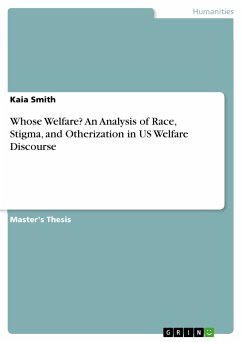Master's Thesis from the year 2017 in the subject Sociology - Work, Education, Organisation, London School of Economics (International Inequalities Institute), course: Inequalities and Social Science, language: English, abstract: On 22 August 1996, President Clinton signed into law the Personal Responsibility and Work Opportunity Reconciliation Act (PRWORA), the most significant reform of the US welfare state in half a century. Since then, the press has generally claimed welfare reform to be a success despite complicated trends illustrating that for many in need of social assistance, life has gotten harder, especially for ethnic/racial minorities. As minority populations on the welfare rolls increase and become more diverse, and redistribution becomes increasingly essential to low-income individuals, it is important to analyze the ideologies and values of the US welfare state in comparison with their context. To do this, I analyze the social construction of welfare recipients in US news discourse from 1996 until 2012 using an integrated content and discourse analysis testing for presence of and patterns within stigamtizing, otherizing, and/or racialized associations with welfare recipients. Generally, my findings illustrate that stigmatization, otherization, and racialization remained prevalent within welfare discourse over the period of analysis; although functioning separately, they reinforced each other to ultimately portray welfare recipients, especially Blacks and Hispanics, as unlikely to warrant public support.
Dieser Download kann aus rechtlichen Gründen nur mit Rechnungsadresse in A, B, BG, CY, CZ, D, DK, EW, E, FIN, F, GR, HR, H, IRL, I, LT, L, LR, M, NL, PL, P, R, S, SLO, SK ausgeliefert werden.









